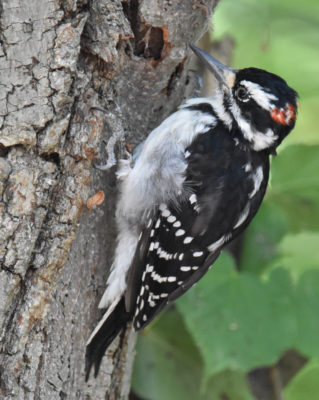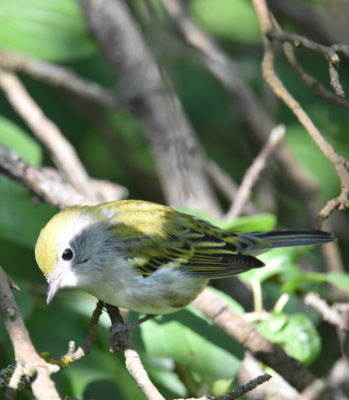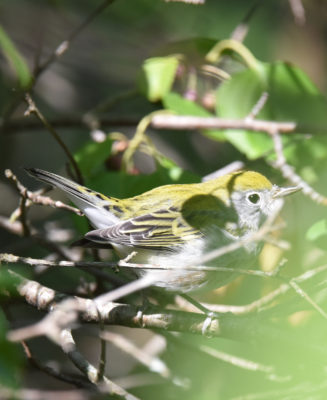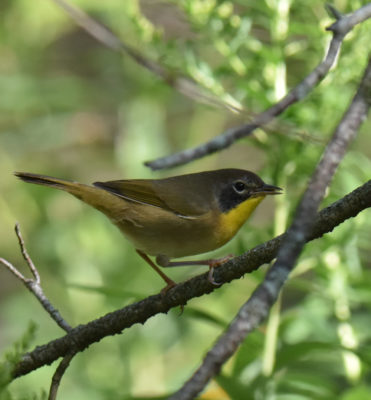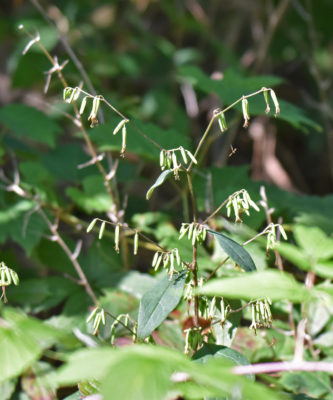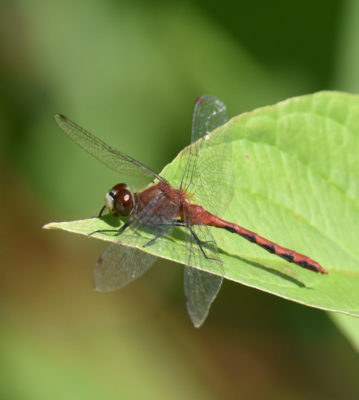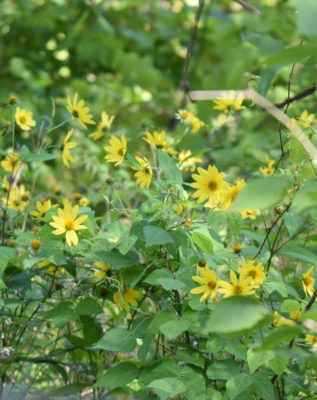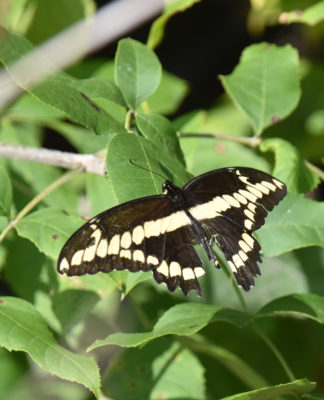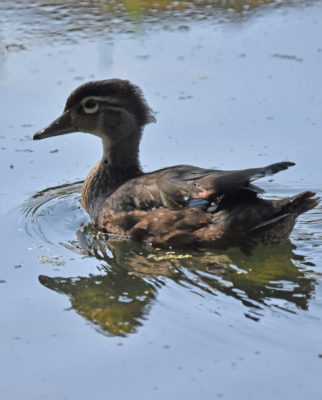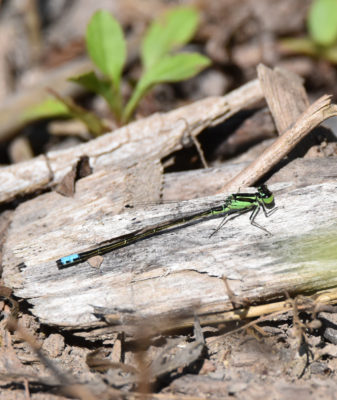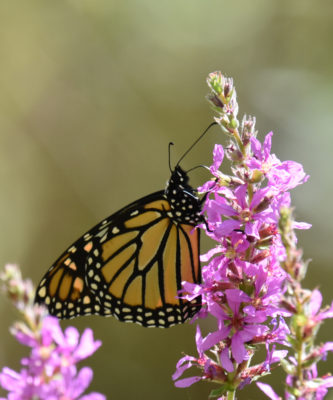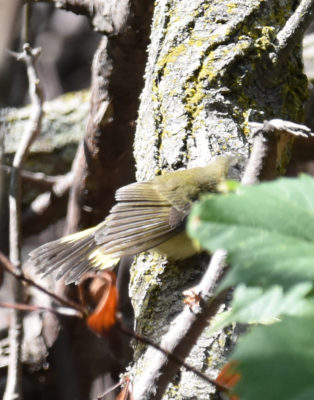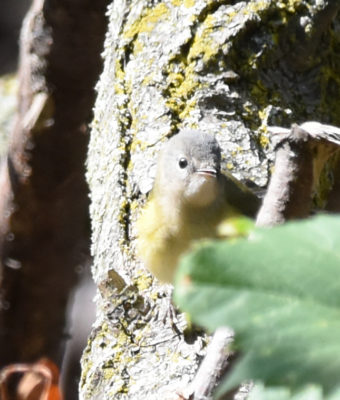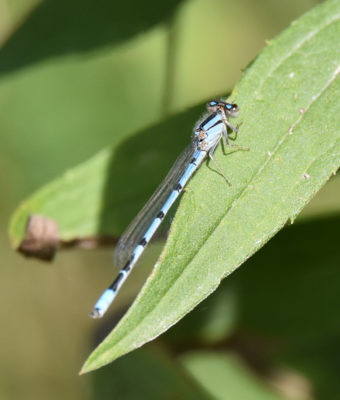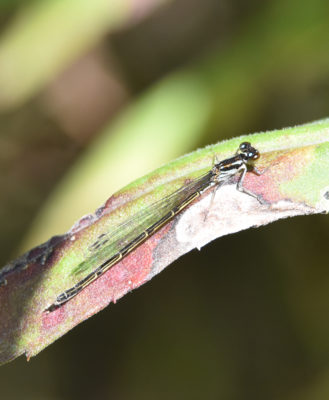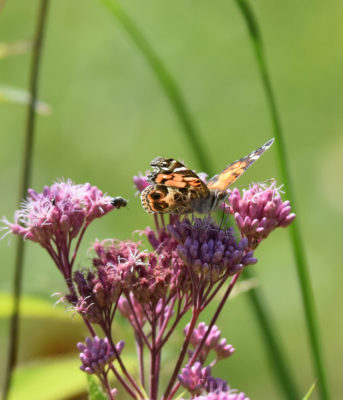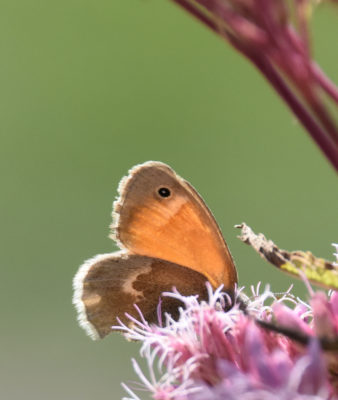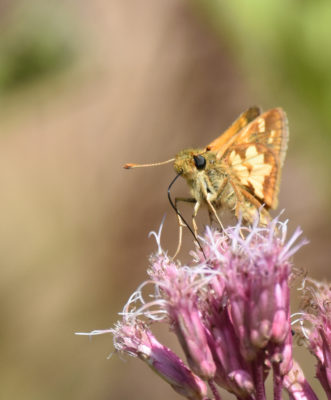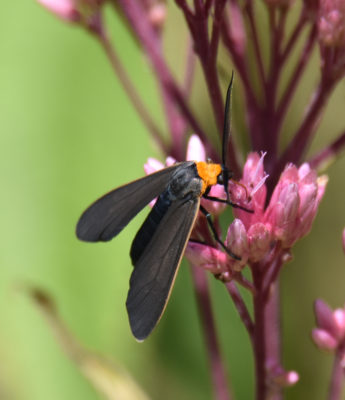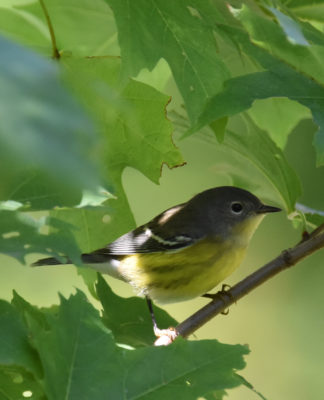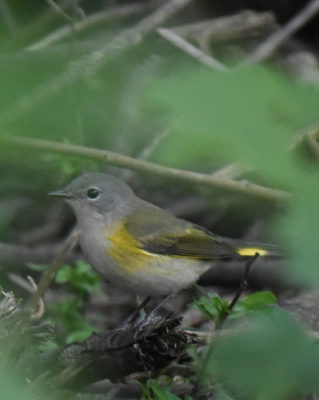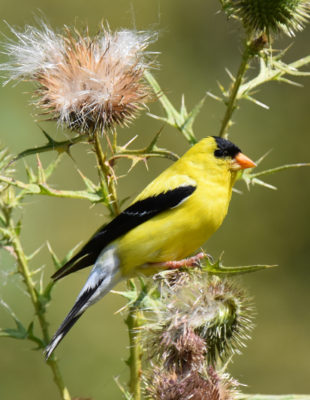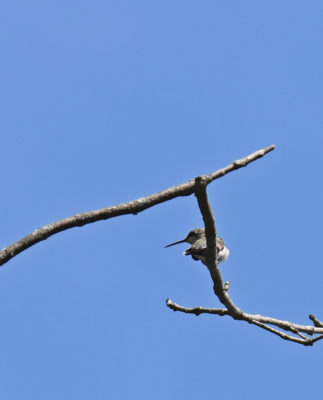It’s been an unusually cool August which can make it more challenging to find insects especially on a morning ramble. The warblers, though, seem to be finding them (and eating them!) and they brighten up the branches themselves with their splashes of yellow and orange. A recent walk through the Rattray Marsh and adjoining Jack Darling Park in Mississauga left me with hundreds of photos to sift through and reminisce about during the weekend showers.
Hairy Woodpeckers Strike a Cheerful Note
This Hairy Woodpecker was hammering happily away near the Old Poplar Row parking lot. The red spots tell me it’s a male and the size and thick, sturdy bill show it’s a Hairy not a Downy.
A Few Not-so-confusing Fall Warblers
There are a few sheltered warm thickets along the Old Poplar Row spur path from the parking area to the main Rattray trail. It’s worth checking them for warblers during both the spring and fall migration.
The first warbler I met was very small and hard to spot. It was working through a jungle of Dogwood, Honeysuckle and Buckthorn. Eventually it popped out enough for me to see it was a Chestnut-sided Warbler.
Another Warbler zipped across the trail ahead of me and dove into a goldenrod thicket.
Again, a bit of patience resulted in an id: It was a male Common Yellowthroat complete with black mask.
Some wild White Lettuce or Tall White Lettuce was starting to bloom. I’m just learning about this wildflower so I’m not sure yet how to tell the two types apart. (No, this is not an edible lettuce!) Pale purple Hog Peanut and red Groundnut were also in bloom along with lots of Goldenrod.
Meadowhawks Along the Boardwalk
Wandering down the main path, away from Green Glades school towards the downstream bridge, I saw several Meadowhawk dragonflies. The red ones get quite common in late August and September. I have yet to try to key them out as my dragonfly id skills are shaky.
The patch of yellow composite flowers is even larger this year. Maybe the flooding and rainy July helped the plants to spread.
Then I Met a Giant at the Bridge…
My biggest surprise of the walk was meeting a Giant at the downstream bridge. I had stopped to look for warblers and the Kingfisher when a fluttering caught my eye.
This Giant Swallowtail landed briefly to sunbathe before continuing on to the east. This year, 2017, has seen many reports pouring in of these large dark “cent sign” butterflies along the shores of Lake Ontario.
A Wood Duck was also exploring the creek. It was growing green head feathers which shone in the sun but not in this photo.
Various damselflies including this (probable) Eastern Forktail were basking and patrolling along the Bexhill street entrance to the marsh.
A Monarch was resting and re-fueling on a stalk of Purple Loosestrife.
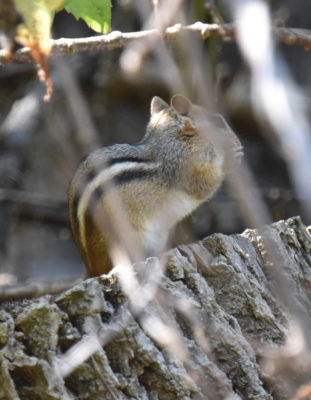
Very few Chipmunks and very few acorns were seen. A great deal of normally dry land was under flood at the Rattray for most of July which can’t have made life easy for the Chipmunks.
A Confusing Fall Warbler
I watched another Warbler “flycatcher-ing” for insects for a few minutes. I thought from the behaviour that it was going to be an American Redstart.
But it doesn’t look like one.
This damselfly was basking on a Goldenrod leaf at the border between the Rattray and Jack Darling.
And this one, either a female or a juvenile male, was basking just three leaves below it.
Butterflies and Moths Visit Spotted Joe Pye Weed in Jack Darling Park
I then left the Rattray and walked along the Lake and up to the small Prairie show garden in Jack Darling Park. As I hoped, it was warmer and calmer further from the Lake and there were a few butterflies visiting the Spotted Joe Pye Weed. (There’s signs on the plants to help people like me identify them. Very helpful!)
An American Lady with it’s blue spots on top and two eyes underneath basked and sipped.
A Common Ringlet glowed as the sun shone through its wings.
A couple of Peck’s Skippers would stop briefly but aggressively fly off to chase any other butterflies. They don’t seem to care what type of butterflies they go after–often chasing the much larger Cabbage Whites.
Two Virginia Ctenucha moths ignored all the fuss and placidly kept investigating the flowers.
Fortunately for my squeamishness, and unfortunately for the pure white Crab Spider none of these butterflies or moths chose to land on the Joe Pye weed blossoms that a spider was waiting on.
A Magnolia Warbler Says Hi and a Redstart Takes a Brief Break
This Magnolia Warbler decided to make it easy for me and posed. I love birds that do this!
It was a challenge to get a photo of this American Redstart but eventually I got one where you can see the yellow under the shoulder and on the tail.
There were American Goldfinches everywhere in the park. They were easiest to watch when they were feeding on the big spikes of thistles.
Jewelweed has also done very well in the Rattray this year, probably because without the Ash trees there is much more sunlight. I kept an eye out around the biggest patches and sure enough, saw a couple of these birds.
Migrating Ruby-throated Hummingbirds like to sip from the Jewelweed (Touch-me-not) blossoms. This one was taking a break high up on a dead branch above the upstream bridge in the Rattray.
I really enjoyed the chance to see so many migrants, butterflies and flowers on a short walk. Now (August 2017) that the board walk is re-opened after several months of closure for repairs, it’s also possible to walk the big loop path instead of doubling back. Of course, hundreds of other people like to walk through the Rattray, too, so it’s important to be patient if you’re trying to get photos: the boardwalk bounces!
Related Reading
- Migrating Magnolia Warblers
- Monarchs Migrate
- Hog Peanut with Purple Flowers and Groundnut with Red Ones
Join In
Have you been seeing migrating warblers, confusing or otherwise? Please share your sightings with a comment.

